THE ART OF ACTING: FILM ACTRESSES & GLOBAL CLASSICS
My reflections on actresses and their most compelling performances in (mostly) classics of global cinema

Nicole Kidman – The Portrait of a Lady | Eyes Wide Shut | Dogville
NICOLE KIDMAN ACTRESS, PART 3 OF 4: EYES WIDE SHUT (STANLEY KUBRICK)
Richard Jonathan

Nicole Kidman as Alice Harford, Eyes Wide Shut, Stanley Kubrick
As a film about a couple in crisis, the specific genius of Eyes Wide Shut is that it foregoes infidelity in favour of fantasy, adultery in favour of desire, and shows the imaginative forces to be more powerful than the enacted ones. It shares this trait with Godard’s Contempt. (Interesting comparisons could also be made with Zulawski’s Possession, Eustache’s The Mother and the Whore and Nicolas Roeg’s Bad Timing.) The wife, Alice (Nicole Kidman), though absent from the screen for much of the film, is nevertheless present throughout: It is her sexual fantasy that obsesses her husband, Bill, and provokes his jealousy, pushing him to reveal his inadequacies.

The driver of Eyes Wide Shut: Alice’s fantasy
Alice’s role in the film is to set Bill in motion, literally: He spends most of the movie wandering in search of his own desire, finding it nowhere. For her part, Alice is at home in her femininity and in touch with her desire. Bill’s response to Alice has been as wrong in its way as Paul’s had been to Camille in Godard’s film: Alice certainly feels contempt for Bill (this, I suggest, is what her ravaged, tear-stained face hides after Bill’s ‘confession’). At the end of the film, vaguely aware of how alienated Bill is from his own desire, she proposes an urgent remedy. ‘What’s that?’, Bill asks. Alice’s answer: ‘Fuck’. Let’s hope, for their sake, it will be a breakthrough one, for Bill certainly needs to find a way out of his alienation.

Nicole Kidman, Eyes Wide Shut, Stanley Kubrick
The second shot of Contempt ends with Camille asking Paul, ‘Do you like my mouth, my eyes, my nose, my ears?’. To which he answers: ‘I love you totally, tenderly, tragically’. The second shot of Eyes Wide Shut has Alice asking Bill, ‘How do I look?’. Instead of looking at Alice, Bill examines his own appearance in the mirror and answers, ‘Perfect’. Alice then asks, ‘Is my hair okay?’. Bill responds, ‘It’s great’, to which Alice retorts, ‘You’re not even looking at it’. And thus, with such tiny particulars of conjugal intimacy, a movement which brings a marriage to a crisis is set in train.

Tom Cruise & Nicole Kidman, Eyes Wide Shut, Stanley Kubrick
From the perspective of femininity, it’s interesting to note that in both Contempt and Eyes Wide Shut when we first see the wife she is nude, revelling in her sensuality before going on to seek affirmation of it from her husband. From the perspective of dramaturgy, and therefore of the dynamics of the couple, what’s interesting is that, again in both films, it is the man who dominates the surface action but the woman who, on a deeper level, drives the narrative forward, giving it its key inflection points. In Eyes Wide Shut, then, Alice’s key scenes require Nicole Kidman’s acting to generate ‘aftershocks’: the actress meets this demand beautifully. Let’s see how she does it.
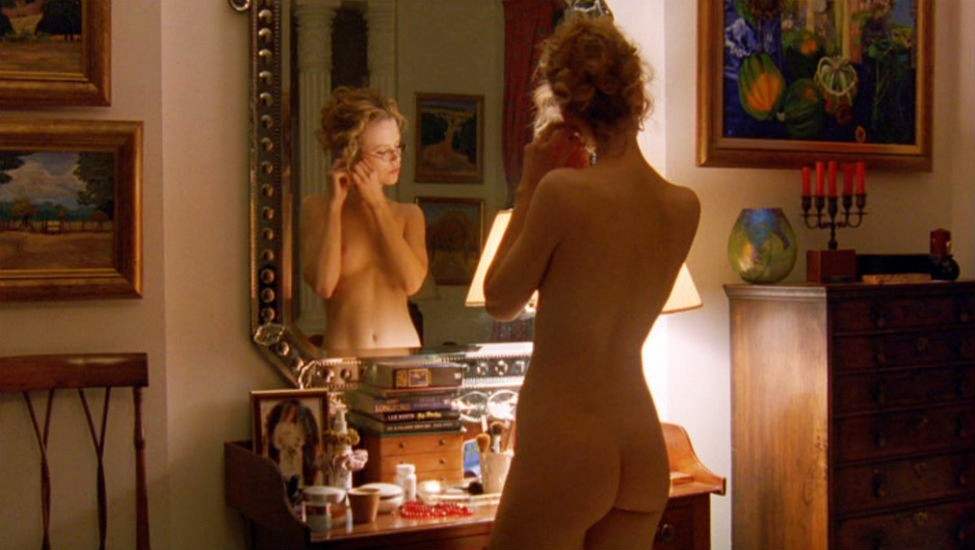
Nicole Kidman, Eyes Wide Shut, Stanley Kubrick
In her first extended scene, Alice flirts on the dance floor with a suave Hungarian seducer, Sandor. The acting challenge here—besides conveying just the right degree of drunkenness—is twofold: first, give due weight to clichés while trading them light-heartedly; second, delineate the arc of the sequence. The progression goes like this: 1) acceptance of the game; 2) performing in the ‘space of play’ (the verbal ping-pong of flirting); 3) an interlude of reverie, eyes closed in the seducer’s arms; 4) bringing the game to a close with a graceful ‘no-means-no’. In acting this scene, Kidman employs a slow delivery of both word and gesture, conveying an alluring sense of play. She is a worthy partner to her would-be seducer while enacting her own agenda: to conjure romance, to imagine ‘what-if’, and to confirm her own sex appeal, all the while being aware that while Sandor is a convenient pretext for fantasy, he is not the one for whom she will infringe the convention of fidelity.

Sky Dumont & Nicole Kidman, Eyes Wide Shut, Stanley Kubrick
In her second extended scene, Alice first confronts Bill with his naïve conception of feminine sexuality and his smug assurance of her fidelity, and then narrates the scenario of her fantasy with the naval officer. Kidman gives a bravura performance in the first segment, and in the second she lets the inherent drama in the situation—her willingness, in fantasy, to abandon husband and child for one night with the man whose glance had set her body aflame—speak for itself. Alice knows that ‘a couple is a conspiracy in search of a crime: sex is often the closest they can get’. She knows that in monogamy the challenge is ‘to keep what is always too available sufficiently illicit to be interesting’ (Adam Phillips, Monogamy).

‘Now, when she is having her little titties squeezed,
do you think she ever has any little fantasies about what handsome Doctor Bill’s dickie might be like?’
Bill, on the other hand, is a ‘nice guy’ who has sanitized his mind; alienated from his own desire, he can’t imagine Alice’s and so can’t take her where she wants to go. If a fantasy is ‘a little novel that one always carries in one’s pocket and that one can open anywhere without anyone being aware of it—in the train, in a café and, most commonly, in bed’ (my translation from Juan-David Nasio, Le Fantasme: Le plaisir de lire Lacan)—then Bill’s problem is that his ‘little-novel pocket’ is bare. One wonders how Alice could have put up with him for so long. When he tells her, ‘This pot is making you aggressive’ and she responds, ‘No, it’s not the pot, it’s you!’, the perceptive viewer understands that Alice is reproaching Bill for his lack of imagination, for his ‘empty pocket’.

Tom Cruise, Eyes Wide Shut, Stanley Kubrick
In her third extended scene, Alice tells Bill her erotic dream. What makes this so upsetting for her is the fact that, however shadowy, she is aware that while she still loves her husband, she no longer desires him. (How to keep sex in marriage erotic? Classic.) Alice wants to thrash things out with Bill, to use the breakthrough of the evening to provoke a change in him, but he constantly avoids her. She wants to rekindle the remnants of their eroticism—to put themselves through a purifying fire, as it were—but he is incapable of accepting her invitation. Indeed, Kubrick highlights that Bill is a man with a fat wallet and a thin imagination—a ‘hollow man’, an automaton—alienated from his desire and therefore lacking a fantasy of his own (his ‘little-novel pocket’ is bare). And how pathetic he is, running around at night trying to buy himself a fantasy while his wife—ready to transgress, ready to restore eros to marital sex—awaits him in bed. He cannot see that, for his eyes are ‘wide shut’. (The phrase suggests a willful refusal to open one’s eyes, to risk changing one’s life.)

Tom Cruise & Nicole Kidman, Eyes Wide Shut, Stanley Kubrick
Troubled by the dream she tells, Alice embraces Bill but cannot make him see that fantasy is sexually exciting only when it is produced by your own psychic life—it cannot be found ‘outside’. (As long as he is unwilling to ‘change his life’—cf. Rilke, ‘Archaic Torso of Apollo’—Bill’s fat wallet and empty ‘little-novel pocket’ condemn him, it would seem, to be forever barking up the wrong tree: his eyes are ‘wide shut’.)

Nicole Kidman & Tom Cruise, Eyes Wide Shut, Stanley Kubrick
In her final extended scene, Alice finds herself with Bill in a space that, ironically, is the antithesis of play: a mega toyshop in which enchantment is smothered by hyper-consumerism. It doesn’t bode well for the future of the couple, and indeed it quickly becomes clear that Bill hasn’t even begun to understand his experience. When Alice says to him, ‘The important thing is we’re awake now and hopefully for a long time to come’, he responds: ‘Forever’. Again, the disjuncture between where she’s at and where he’s at is striking: he meets her insight with an empty cliché. He fits in so well with his milieu that his individuality—like that of the child’s imagination in the toyshop—is smothered. Far from being awake, he is sleepwalking through life, in contrast to Alice who is vitally alert. She then says, ‘Let’s not use that word, it frightens me’. Bill is perplexed: he has realized his wife is not a Barbie doll, but he just doesn’t know what to do: his eyes are ‘wide shut’.

‘No Daddy, this is not Mommy’: Eyes Wide Shut, Stanley Kubrick
She tells him: ‘I do love you and you know there is something very important we need to do as soon as possible?’ He asks, ‘What’s that?’. She answers… Well, you know what she answers. Easy to say, but hard to do in a liberating way. And it is on this image of Alice instructing Bill that Kubrick leaves us: an image of a wife who, unlike her husband, understands that ‘the difference between monogamy and infidelity is the difference between making a promise and being promising’ (Adam Phillips, Monogamy). Bill can’t see that, for his eyes are ‘wide shut’.

Tom Cruise & Nicole Kidman, Eyes Wide Shut, Stanley Kubrick
Nicole Kidman’s performance in Eyes Wide Shut is remarkable in that, in a film conceived as a complex ‘score’, she avoids all false notes as she plays the feminine ‘melody’ in beautiful counterpoint to the masculine, while conveying without sentimentality the pathos of dissonance aspiring to harmony.

Nicole Kidman & Tom Cruise, Eyes Wide Shut, Stanley Kubrick
Acting is a collaborative art—actors act ‘off’ each other—and I’d be amiss if I didn’t mention that Tom Cruise’s performance, though in a very different register, is every bit as good as Kidman’s. I conclude, then, by taking my hat off to both Cruise and Kidman: thanks to them, Kubrick was able to realize his dark vision of masculinity, femininity and the couple in the bright land (all those Christmas lights!) of hyper-consumerism.

Tom Cruise & Nicole Kidman, Eyes Wide Shut, Stanley Kubrick
BILL’S PURSUIT OF A FANTASY FOR HIMSELF
Seven Theses on Sexual Excitement
Robert Stoller
Robert Stoller (1924-1991), once Professor of Psychiatry at UCLA School of Medicine, was one of the greatest psychoanalytic theorists of sexuality. I have excerpted passages from his book, Sexual Excitement: Dynamics of Erotic Life, and present them here as ‘theses’. They stimulate reflection on Eyes Wide Shut, on Alice’s fecund fantasy life in opposition to Bill’s sterile one. (The captions are mine. The juxtaposition of image and ‘thesis’ is arbitrary. Stoller died 8 years before Eyes Wide Shut appeared.)
If you find Stoller intellectually stimulating, take a look, in The World of Mara Marietta, at Sontag’s Seven Theses from ‘The Pornographic Imagination’.

ALICE AND THE REAL BILL: AN EMPTY MASK
Nicole Kidman, Eyes Wide Shut, Stanley Kubrick
THESIS ONE
People in general have a paradigmatic erotic scenario—played in a daydream, or in choice of pornography, or in object choice, or simply in actions (such as styles of intercourse)—the understanding of which will enable us to understand the person. The function of daydreams is to state a problem that has been disguised and then to solve it, the problem and the solution being the poles between which excitement flows.
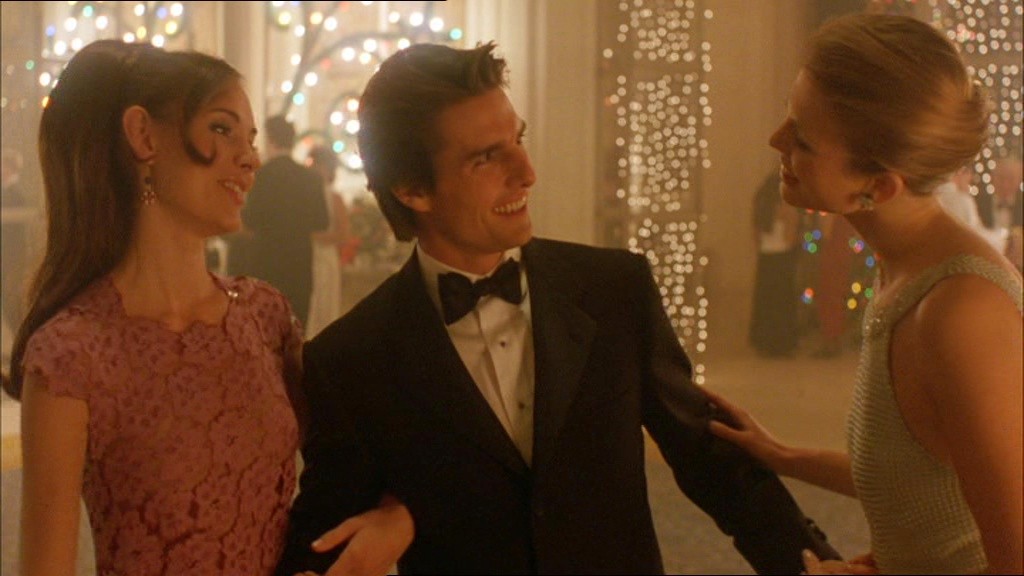
POSSIBILITY 1: A TWOSOME FOR A ONE-NIGHT STAND
Stewart Thorndike, Tom Cruise & Louise Taylor, Eyes Wide Shut, Stanley Kubrick
THESIS TWO
Our mental life is experienced in the form of fantasies. These fantasies are present as scripts—stories—whose content and function can be determined. What we call thinking or experiencing or knowing, whether it be conscious, preconscious, or unconscious, is a tightly compacted but nonetheless separable—analyzable—weave of fantasies. What we consciously think or feel is actually the algebraic summing of many simultaneous fantasies

POSSIBILITY TWO: THE GENERATIONAL TABOO
Leelee Sobieski, Eyes Wide Shut, Stanley Kubrick
THESIS THREE
Fantasy is the private meaning we give to each element of mental life. A fantasy can be conscious, preconscious (available to consciousness if desired), or unconscious (out of consciousness and not retrievable just by willing it there). A script or scenario is a story line—a plot—complete with roles assigned to characters and a stream of action. When a script is conscious, it is, if private, either a spontaneous, unwilled emergence or a daydream. If published, the daydream takes such forms as novels, nonfiction, plays, films, music, or paintings. Unconscious scripts can be deciphered by means of psychoanalysis, unearthed from their hiding places in character structure, neurotic symptoms, sexual behavior, posture, clothing—in any behavior. The exact details of the script underlying the excitement are meant to reproduce and repair the precise traumas and frustrations—debasements—of childhood; and so we can expect to find hidden in the script the history of a person’s psychic life.

POSSIBILITY THREE: SUBLIMINAL INCEST
Tom Cruise, Leelee Sobieski, Rade Šerbedžija, Eyes Wide Shut, Stanley Kubrick
THESIS FOUR
It is hostility—the desire, overt or hidden, to harm another person—that generates and enhances sexual excitement. The absence of hostility leads to sexual indifference and boredom. The hostility of erotism is an attempt, repeated over and over, to undo childhood traumas and frustrations that threatened the development of one’s masculinity or femininity. The same dynamics, though in different mixes and degrees, are found in almost everyone, those labeled perverse and those not so labeled. For most people, just those qualities in another that produce a feeling of love work against being able to lust.

POSSIBILITY FOUR: THE WHORE (HE PAYS TO STRIP HER OF THE MADONNA)
Vinessa Shaw & Tom Cruise, Eyes Wide Shut, Stanley Kubrick
THESIS FIVE
The mental factors present in perversions that I believe contribute to sexual excitement are: hostility, mystery, risk, illusion, revenge, reversal of trauma or frustration to triumph, safety factors, and dehumanization (fetishization). All of these are stitched together into a whole—the surge of sexual excitement—by secrets. When one tabulates the factors that produce sexual excitement, exuberance—pure joyous pleasure—is for most people at the bottom of the list, rarely found outside fiction. Only in the rare people who can indefinitely contain sexual excitement and love within the same relationship do hostility and secrecy play insignificant parts in producing excitement.

POSSIBILITY FIVE: ACTOR IN SEARCH OF A ROLE IN SOMEONE ELSE’S EROTIC SCENARIO
Tom Cruise & Abigail Good, Eyes Wide Shut, Stanley Kubrick
THESIS SIX
Secrecy accompanies sexual excitement. It functions in two different ways. First, for most people—even the irreligious—sex is sin, and not just because of society’s rules but because our consciences know how ‘bad’ these forbidden desires are. So erotic pleasure is preserved by secrets: 1) secrets operating between ourselves and the outside world; 2) secrets built into sexual scripts (the story lines people use consciously and preconsciously for ensuring their excitement). In the second type, secrets operate as barriers between one part of oneself and another, serving to provoke or heighten excitement.

POSSIBILITY SIX: MAKING LOVE WITH ME AND FANTASIZING ABOUT HIM? (BARRED FROM THE EVENT)
Tom Cruise | Nicole Kidman & Gary Goba, Eyes Wide Shut, Stanley Kubrick
THESIS SEVEN
Excitement—any, not just sexual—is a dialectic, a rapid oscillation between two possibilities (and their affects). One we tell ourselves has a positive, the other a negative outcome: pleasure/pain, relief/trauma, success/failure, danger/safety. Between the two lies risk. The synthesis is the creative product: daydream, pornography, painting, symphony, religious ritual, drama.

POSSIBILITY SEVEN: MAKING LOVE WITH HIM AND FANTASIZING ABOUT ME? (BARRED FROM THE EVENT)
Tom Cruise | Nicole Kidman & Gary Goba, Eyes Wide Shut, Stanley Kubrick
MARA, MARIETTA: A LOVE STORY IN 77 BEDROOMS
A literary novel by Richard Jonathan
FILM ACTRESSES & GLOBAL CLASSICS IN THE MARA MARIETTA CULTURE BLOG
CLICK OR TAP ON THE IMAGE TO GO TO THE CORRESPONDING PAGE
By Richard Jonathan | © Mara Marietta Culture Blog, 2020 | All rights reserved


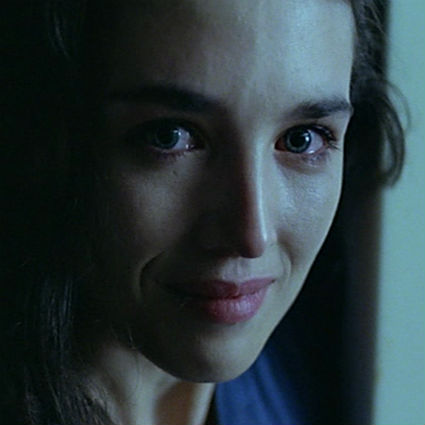



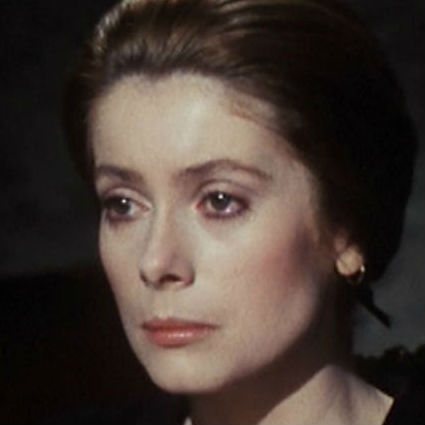





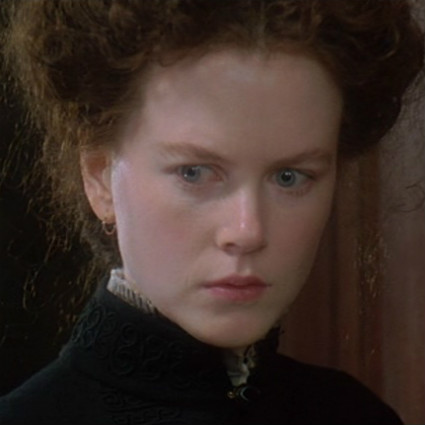

Comments